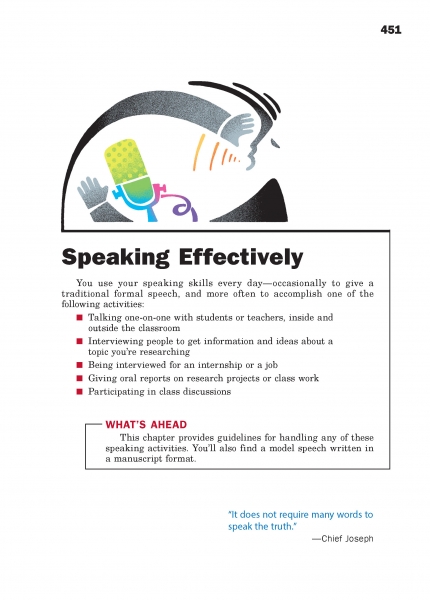Page 451 from

Start-Up Activity
Play for students excerpts from famous speeches in United States history.
Ask what makes these speeches so powerful. Students will probably offer a number of observations:
- Each speech occurred at a critical moment in history.
- The speakers connected to the audience.
- The audience was international.
- The words perfectly captured the moment.
- Each speech clearly communicated its subject and achieved its purpose.
Tell students that they have just identified the key traits of effective speeches. Each part of the communication situation works: the speaker, the message, the medium, the audience, and the context. Let them know that this chapter can help them speak effectively as well.
Think About It
“A voice is a human gift; it should be cherished and used, to utter fully human speech as possible. Powerlessness and silence go together.”
—Margaret Atwood

Start-Up Activity
Play for students excerpts from famous speeches in United States history.
Ask what makes these speeches so powerful. Students will probably offer a number of observations:
- Each speech occurred at a critical moment in history.
- The speakers connected to the audience.
- The audience was international.
- The words perfectly captured the moment.
- Each speech clearly communicated its subject and achieved its purpose.
Tell students that they have just identified the key traits of effective speeches. Each part of the communication situation works: the speaker, the message, the medium, the audience, and the context. Let them know that this chapter can help them speak effectively as well.
Think About It
“A voice is a human gift; it should be cherished and used, to utter fully human speech as possible. Powerlessness and silence go together.”
—Margaret Atwood
